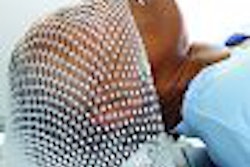Radiation oncologists who come across previously undetected findings during CT simulation have a responsibility to ensure that those images are reviewed by a diagnostic radiologist, according to researchers from the Henry Ford Health System in Detroit. While the group acknowledged that CT simulation images are not of the highest diagnostic quality, they can still yield clinically relevant information.
"CT-based planning has become the standard of care. It specifically allows for 3D visualization of the area of interest, and results in better tumor targeting with the sparing of normal tissues," said Dr. Anushka Patel in a talk at the 2007 American Society for Therapeutic Radiology and Oncology (ASTRO) meeting in Los Angeles. "In most radiation oncology departments with CT simulation, the images are not interpreted by diagnostic radiologists. We had a unique opportunity at one of our satellite facilities in which all CT scans performed at the time of simulation were formally read by a diagnostic radiologist."
"Our goal was to find the true incidence of previously undetected abnormalities at the time of simulation. We specifically assessed for new lesions by reviewing all diagnostic scans prior to simulation," Patel added.
For this study, CT simulation scan reports from 351 consecutive early breast cancer patients over a six-year period were reviewed. The mean age of the patients was 60 years, and one-fourth had a current or prior history of smoking, Patel stated.
"All patients underwent a standard fluoroscopy simulation. They were then brought to diagnostic radiology where a flat tabletop was created, and they were placed in the same position (as the fluoroscopy simulation). Five-millimeter CT slices were obtained 20 cm above and below the isocenter with no intravenous contrast," she said.
The researchers determined the percentage of reports in which a previously undetected abnormality was reported on the planning CT. Finally, they reevaluated the prior and subsequent diagnostic CT exams to determine the relevance of these findings.
According to the results, 15% of the patients had some form of newly detected abnormalities seen on CT simulation. Among these patients, 60% of the findings were deemed by the reviewing diagnostic radiologist to be potentially significant ("cannot exclude metastatic findings") and required additional imaging with MRI or CT. The findings were previously undetected lung nodules, liver lesions, and kidney or adrenal lesions. Among these 31 patients who required additional workup, 9% had clinically relevant findings.
Patel and colleagues performed an additional analysis to see if certain patients carried risk factors for abnormal findings at the time of simulation. They found that there was no difference in the distribution of staging or percentage of abnormalities found. However, they did notice a difference in the mean age of the patients: Those with significant abnormalities had a mean age of 65.9 years (24%) versus those at 58.5 years. In those with lung lesions, smoking status did not indicate a greater risk for abnormalities, Patel added.
While most of these CT simulation-driven findings were ultimately deemed stable or benign, Patel and colleagues emphasized that "for quality assurance purposes, careful evaluation of CT planning simulation images is warranted." In particular, they recommended follow-up imaging for those with lung lesions.
However, the authors also stressed several caveats to using CT simulation images in this way. Markers and immobilization may create artifacts that mimic abnormalities. Other technical differences between a CT simulation image and a diagnostic one include patient position, slice thickness, and lack of contrast agent.
ASTRO session moderator Dr. May-Lin Tao asked how these findings would impact clinical care, suggesting that vigilant review of the CT simulation studies might be the beyond the scope of the radiation oncologists and could potentially lead to unnecessary tests.
"We do not feel that we need to have all CT sims followed up by a radiologist, but it can change patient care. We feel that there are instances where you can find abnormalities that should be truly assessed by the radiologist," Patel said.
By Shalmali Pal
AuntMinnie.com staff writer
January 4, 2008
Related Reading
Radiotherapy planning with 3-tesla MRI optimizes control for reduced morbidity, December 12, 2007
PET/CT provides cost-savings for NSCLC radiotherapy, July 5, 2005
Copyright © 2008 AuntMinnie.com



















